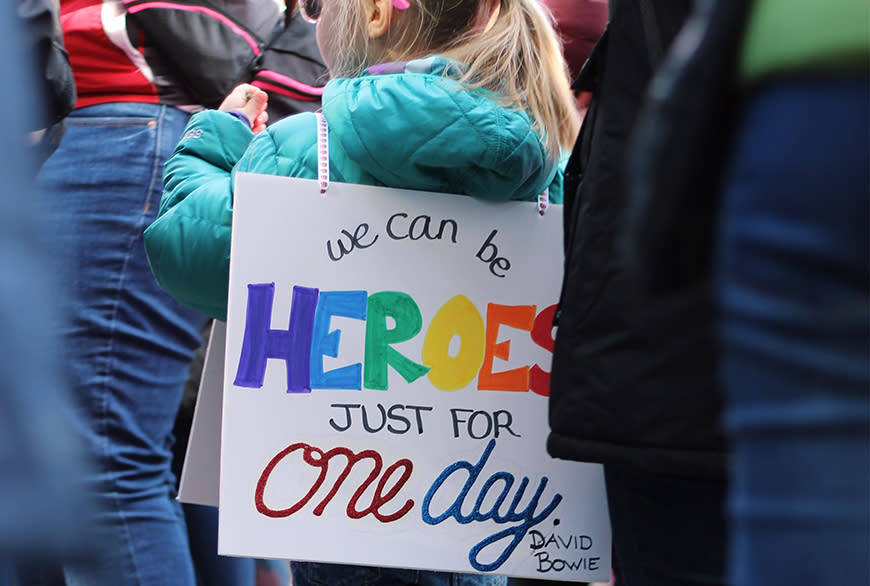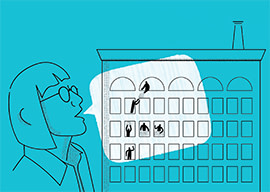
In the theatre of innovation, a customer isn’t some character who walks onstage, slaps down a credit card, and buys, say, a Swiffer. No, it’s a person who has embarked on a long, often digital, occasionally dramatic customer journey. Innovators work hard to ensure that customers have as smooth a ride as possible. Our enemies are pain points, friction, any and all roadblocks to customer happiness. (Well, at least they usually are.)
The challenge with the overly optimized customer journey is that it’s somewhat infantilizing. Removing every obstacle from the customer experience makes businesses into snowplow parents and doesn’t necessarily allow a customer to feel like he or she has achieved something meaningful. Which isn’t, we recognize, good for anyone.
Understanding an innovation officer’s heroism means helping her test with care, gather and analyze the proper data, and prototype responsibly.
The antithesis of the customer journey the hero’s journey, a concept dreamed up by Carl Jung and popularized in the United States by the trinity of Joseph Campbell, Bill Moyers, and Star Wars, in which a hero’s character is tested, and then formed, by dealing with one challenge after another.
We recently had a lively conversation about the hero’s journey on our LinkedIn page, and this got us wondering: Who’s the hero in our work? Turns out, there are many heroes in the anthology of innovation. To operate in this world is to understand the various narrative options available and to employ the right one at the appropriate moment.
Business Leader as Hero
Innovation often starts at the top. The role of business leaders is (a) to understand the relevance of innovation, and (b) approve and support the plan to try to create something new and valuable for the company.
The person who runs a company has to make big decisions that impact a company’s financial health, the happiness of customers, and the wellbeing of employees. Matt Sheehan, the CEO and President of Primo Health, knew he needed to learn more about his customers—and recognizing that he and his colleagues weren’t expert in this particular area, he decided to invest in working with us.
Innovation Officer as Hero
The person tasked with overseeing innovation for a company has a tricky job; it takes fortitude. When Robin Glasco, formerly the CIO of Blue Cross Blue Shield of Massachusetts, spoke with us, she said, “I really want to reinvent healthcare, and [to do that] you gotta be risky, you gotta have some fearlessness to you. If you’re into sports it’s kinda that Cam Newton pulling back that Superman pose that he does.”
There is something in the effort a designer puts forward that is selfless and resourceful.
Understanding an innovation officer’s heroism means helping her test with care, gather and analyze the proper data, and prototype responsibly. When we work with such people, we’re careful to scope the project so that it will be feasible and will be viewed as a success by the executives who oversee this person’s projects.
Designer as Hero
Can a designer be a hero? Absolutely. There is something in the effort a designer puts forward that is selfless and resourceful. Skilled in battling resistance and opposition, the heroic designer is an essential person to have in the project room, particularly with clients that are feeling uncertain about the innovation process or who need support when explaining to their leadership what they’re doing. The designer is heroic because her or she often displays an outsized sense of humility. But a designer need not be a selfless superhuman. Massimo Vignelli is a great example—one who carefully balanced both humility and ego.
Solution as Hero
In some innovation stories, the hero isn’t even a person. There are some clients who only want to understand how a newly created product will solve a customer’s problem. In this case, the product takes the stage.
EPAM’S Clare Bond suggested on LinkedIn that perhaps it’s “the product/service as the hero which helps the user/customers pain points,” adding: “We create the heroic product/service by following a user-centered design thinking methodology. It comes out of the understanding and interplay between user needs, business drivers, and technological constraints.”
"The most heroic thing that a hero can do is to bring the power of the word back to the people.”
A good example of this is found in our work on the Omnipod. Kids who suffer from diabetes have to face the challenges of stigma, pain from injections, and an overall feeling of alienation from their healthy friends in class. In this narrative of product-as-hero, these children can more easily face their difficulties with a discrete and effective tool—a wireless, tube-free insulin-delivery system that is worn on the body for three days at a time and then replaced.
Employee as Hero
Bringing an innovation to the public is not an easy job. And when an organization innovates in its service design, this can create massive challenges for the frontline employee. As our Toby Bottorf explains, a good service system allows improvisation, giving the employee enough freedom to deal with unintended situations. Bottorf says that this question is paramount: “How do you set up a service system than can deal with things that you didn’t anticipate when you were figuring out what the service needed to do?” Answer it, and you’ll give a frontline worker the superpower of recovery.
Team as Hero
A core innovation team can together become a hero, and this is often a story to be used to create collaboration between EPAM Continuum and our clients. “A great leader/manager knows how to give language and purpose to others so that the unit is capable of heroic deeds beyond the individual or the sum of its parts,” says our LinkedIn service design pal named Ryan Payeur. “Therefore, the most heroic thing that a hero can do is to bring the power of the word back to the people.”
Just as human-centered design can be focused on any person, so too can the innovation hero be any member of our dramatis personae.
Customer as Hero
And, of course, in some innovation stories, the customer becomes the hero. We want our consumer to do the right thing. By understanding him or her on an emotional level, innovators can help the consumer make good decisions.
Two examples. In this video, our Kristin Heist explains four reasons why consumers buy sustainable products and services. Or consider our work on the Pampers Stages of Development project, in which we created diapers that provided parents with emotional support, and their babies with functional stuff, as they moved through early childhood together. These stories are all about customers succeeding, with the solution playing a supporting role in the background.
Human-Centered Heroism
The democratization of heroism is a function of human-centered design. My friend, the brilliant designer Jessica Helfand, dislikes the idea of “human-centric” design—“I confess I always cringe at buzzwords, and ‘human-centric’ probably tops the list,”—but I think she’s missing something here. The notion that design can be focused on a human, any human, allows for a shifting center of innovation. Just as human-centered design can be focused on any person, so too can the innovation hero be any member of our dramatis personae. It all depends on how you stage the play.




